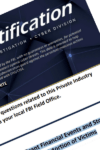
- Corporate data is the lifeblood of business and because of remote work and constant competitive pressures, it is more vulnerable than ever. Protecting that data while still making it available to those who need it is why many organizations are turning to Enterprise Digital Rights Management (EDRM). Information security, privacy, regulatory compliance, and data governance requirements drive how we manage corporate data. Business requires us to share sensitive information with employees, contractors, business partners, and...
- Corporate data is the lifeblood of business and because of remote work and constant competitive pressures, it is more vulnerable than ever. Protecting that data...








